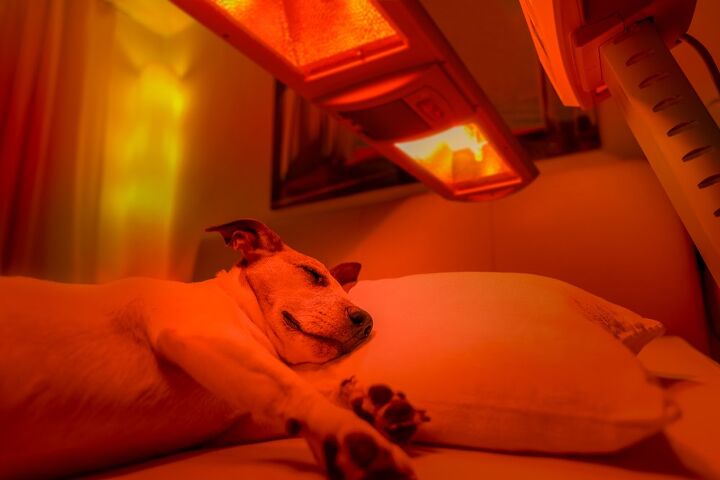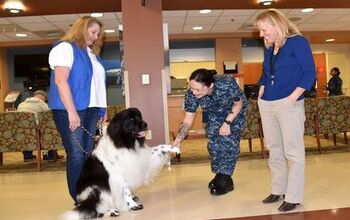What is Red Light Therapy for Dogs?

When your dog gets injured or is recovering from a routine surgery, it can be difficult to keep them comfy and to help heal their injuries faster at the same time. However, innovative red light therapy for dogs proved to be a safe and efficient treatment for a variety of ailments, from skin inflammation to wound healing, and much, much more.
Red light therapy is also known as photobiomodulation therapy, and it involves the use of red or near-infrared light to stimulate healing and reduce inflammation. The reason for its effectiveness is the specific wavelengths that are absorbed by the mitochondria in cells, which are considered the cell’s powerhouse. As the mitochondria absorb the “red light”, the absorption stimulates the production of adenosine triphosphate (ATP), which is popularly called the “energy currency of cells”. The entire process then increases blood flow to the treated area, stimulating faster healing, and pain relief. What’s so great about red light therapy is that it is not invasive, and all that is needed is a specialized device that emits specific wavelengths of light.
Red light therapy treatment sessions usually last from a few minutes to around 20 minutes, depending on the condition being treated and the specific device used. The frequency of sessions may vary, with some dogs benefiting from daily treatments initially, followed by less frequent “maintenance” sessions. Of course, your veterinarian can advise you on the appropriate treatment procedure for your dog's needs – if you’re unsure if red light therapy is the right choice for your dog, be sure to consult an expert before taking any steps.
Of course, while you shouldn’t do anything without your vet’s approval, a great thing about this treatment is that it is entirely safe. When used appropriately, it has no risks for your dog. The secret is in the light energy that does not generate heat at all, eliminating any risk of burning or tissue damage. Naturally, it goes without saying that you should closely follow the manufacturer’s guidelines for the specific device you are using.
Thankfully, red light therapy devices are varied nowadays, and come in all shapes and sizes, making use very simple. You can opt for an easy-to-use wearable red light belt, or for the classic handheld design that helps you target specific areas – pick according to your pet’s needs and your own preferences to find a design that works best for you. Wearables are a good choice for mellow dogs that are not bothered by clothes and such, but an overly curious or active dog would benefit more from a handheld device for targeted therapy at designated times of the day.
Red light therapy can be applied to various parts of the body, depending on your dog's condition. Common areas targeted include joints such as hips, knees, and elbows, as well as muscles, wounds, and areas experiencing inflammation or pain. Thanks to this variability, your dog can enjoy multiple benefits. The therapy can help alleviate pain associated with conditions such as arthritis, joint inflammation, and musculoskeletal injuries, and in this way, it can improve mobility and range of motion for dogs suffering from stiffness or arthritis. Additionally, it is a great aid for reducing inflammation and swollen tissue, thanks to its anti-inflammatory properties. In just a few therapy sessions, your dog could feel much better and more agile. And if your four-legged friend happens to be recovering from surgery, or has earned a little cut in his adventures, red light therapy can help speed up the healing process and make these a thing of the past.
In most cases, red light therapy is used in veterinary clinics, where it is administered by professionals. Thankfully, nowadays it is readily available for home use. The devices are becoming easy to use and handheld, allowing for greater use outside of the clinics. However, you should still inquire with your vet if you have any doubts or additional questions. They can give you more specific information, and guide you towards purchasing the best device for your pet’s needs. Remember, if you are ever in doubt about your dog’s health, go to the vet first!

A proud mama to seven dogs and ten cats, Angela spends her days writing for her fellow pet parents and pampering her furballs, all of whom are rescues. When she's not gushing over her adorable cats or playing with her dogs, she can be found curled up with a good fantasy book.
More by Angela Vuckovic

























